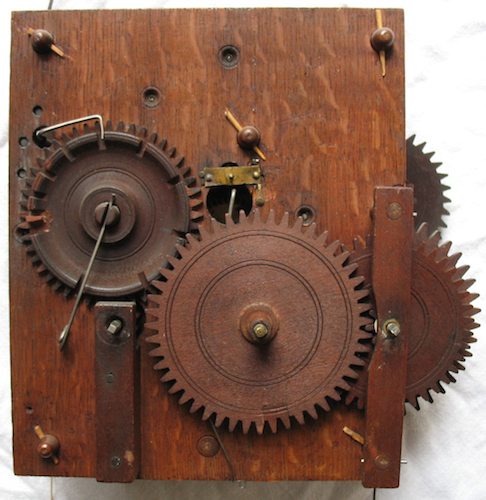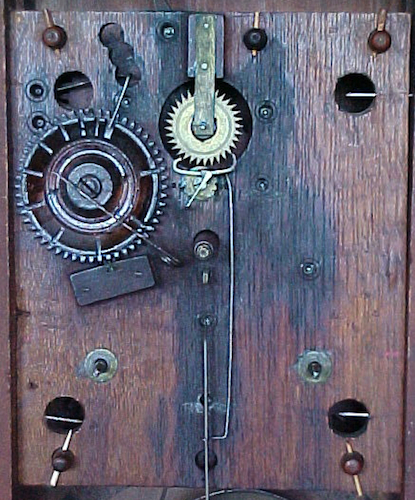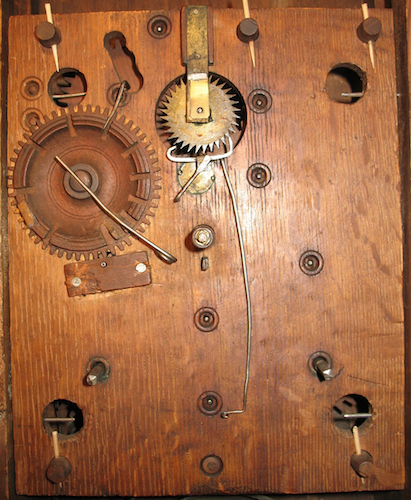30-hr wooden works movements based on an Eli Terry design can be distinguished from one another using the identification scheme of Snowden Taylor. He was able to categorize movements based on features of the movements that were characteristic of specific makers. His identification scheme was published in the NAWCC Bulletin (Whole No. 208, Vol. XXII, No. 5, Part I, October 1980). Snowden has updated the identification table over the years, but the Bulletin article remains an indispensable resource. There used to be an updated version of the table in a Microsoft Excel spreadsheet available on-line. Unfortunately, that website has been taken down. NAWCC Chapter 194 (Cog Counters) is working to make the Excel version available again.
The first three, and earliest, of the movements shown below do not follow the Terry design. The Chauncey Boardman movement (commonly referred to as a “groaner”) was used by Jerome from around 1825-1828. The movement designed by Noble Jerome (“thin” movement) was introduced in 1828 presumably to circumvent Terry’s patent.
“Groaner” movement; probably made by Chauncey Boardman, in a c. 1825-1826 Jerome, Darrow & Co. bronzed looking-glass clock.
Groaner movement with between-the-plates alarm, from a Jeromes & Darrow bronzed looking-glass clock likely dating to 1828. Note the lower extension of the movement plates to accommodate the alarm.
Noble Jerome “thin” movement, c. 1828, from a Jeromes & Darrow bronzed looking-glass clock.
Type 5.112 30-hr wooden works movement with brass bushings (original) from a c. 1832 Jeromes & Darrow column & cornice clock.
Type 5.113 30-hr wooden works movement by Jeromes & Co., c. 1834. Distinguished from the type 5.112 by rings around the winding arbors. Of course, the brass-bushed 5.112 shown above does not have rings, but that’s due to the bushings (which are original).




